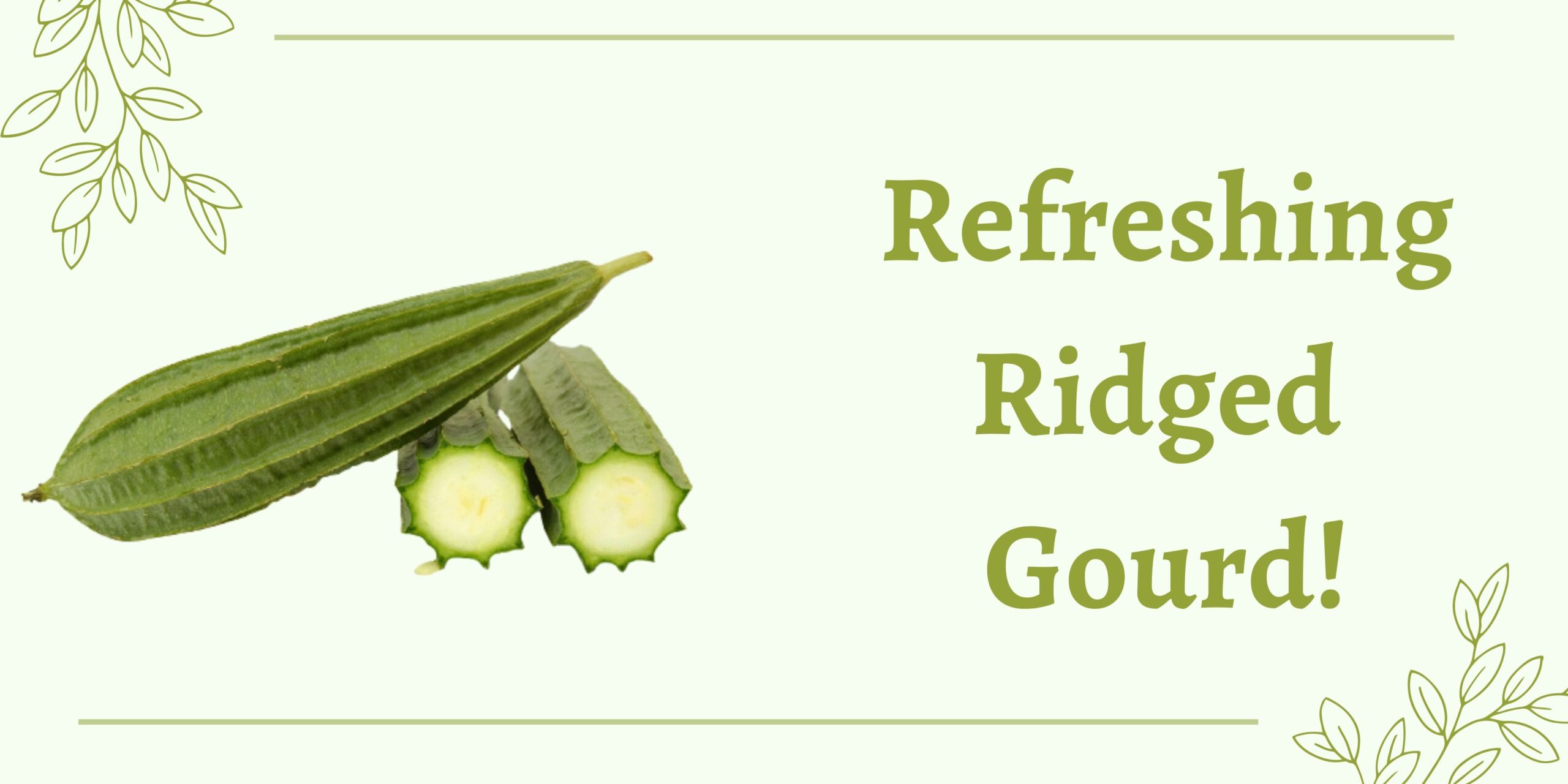
Refreshing Ridged gourd!
The benefits of the ridged gourd are thoroughly elaborated in this post. The popular vegetable ridge gourd is widely used in Indian cuisine. It’s a green, fleshy vegetable with a different flavour. There are two types available: one with a smooth surface and one with ridges. Locally, it is referred to by a variety of names, including “Beerakaya” in Telugu, “Jhinge” in Bengali, “Turai” in Hindi, and “Peerkangaai” in Tamil.
Many regular foods, including sambhar, chutney, dal, pakoras, and raita, are frequently made using ridged gourd after it has been adequately spiced to increase flavour.
Despite the fact that it is not commonly eaten due to its flavour, ridge gourd has various health benefits. It is abundant in nutrients like vitamin A, vitamin B6, vitamin C, magnesium, iron, water, and dietary fibre.
Ridge gourd is a very nutritious vegetable because it only has 40 calories per cup, making it useful for weight loss. A person who consumes ridge gourd in addition to other low-calorie, high-fibre foods can lose up to 2 pounds every week. Ridge gourd promotes satiety and inhibits overeating.
Advantages of the ridged gourd
The ridge gourd has the ability to cleanse the blood of toxic pollutants, undigested food particles, and alcohol residues. As a result, it plays a significant role in promoting both liver health and bile function.
Bile, a fluid produced by the liver, aids in the breakdown of lipids, often known as fats. This medicine is also effective in treating jaundice and other infections in the hepatic duct.
Reducing body heat is one of the benefits of the ridged gourd. A ridge gourd is a water vegetable that contains a lot of liquid, which has wonderful cooling benefits and helps to minimise excessive body heat.
This nutritional feast is also high in minerals, including selenium, copper, zinc, sodium, and potassium. These aid in the prevention of dehydration, the restoration of electrolyte balance, and the replenishment of the body’s depleted fluids and nutrients. They also aid in neutralising excessive acidity in the body and generating a beneficial alkaline environment.
Uses of the ridged gourd
The ridge gourd, a member of the gourd family of vegetables, holds a lot of water. Furthermore, the flesh of the ridge gourd is high in cellulose, a form of natural fibre present in foods.
As a result, consuming ridge gourd in the shape of dals or fries, or even sipping a glass of ridge gourd juice flavoured with honey, will provide immediate relief from constipation while also restoring normal bowel movement and digestion.
Revitalising skin health is included in the benefits of the ridged gourd. Ridge gourd has antioxidant-rich vitamins C and A, which assist the body clear itself of damaging free radicals, preserve healthy skin tissues from oxidative damage, and detoxify and purify the blood.
Ridge gourd, when taken in small amounts in curries, dals, stir-fries, juices, or salads daily, aids in the improvement of blood flow to skin cells. It also helps treat infections, acne, and dark spots. Further, it aids in the promotion of bright, soft, and beautiful skin.
Additional uses of the ridged gourd
Ridge gourds are high in iron; therefore, eating them frequently with meals will help alleviate anaemia caused by a shortage of iron. Ridge gourd is also high in vitamin B6, which, together with iron, is necessary for the body’s healthy synthesis of red blood cells. As a result, it regulates blood flow to all bodily organs, minimising weariness and discomfort.
Even in one’s later years, the considerable levels of vitamin A present in ridge gourd in the form of beta carotene can improve eyesight. They also aid in the prevention of other eye diseases such as macular degeneration and partial blindness. Beta carotene, a helpful antioxidant, protects the eyes from harmful free radicals by eliminating toxins from the optic neurons and visual blood vessels.
Regulating diabetic symptoms is one of the benefits of the ridged gourd. Ridge gourd is naturally low in calories and carbohydrates and high in dietary fibre. This helps to control appetite, sudden cravings and prevent weight gain.
Furthermore, this pulpy green vegetable is high in hypoglycemic phytonutrients, which help to reduce unexpected blood sugar spikes after meals. Ridge gourd improves metabolism, digestion, and insulin activity, which aids in diabetic management.